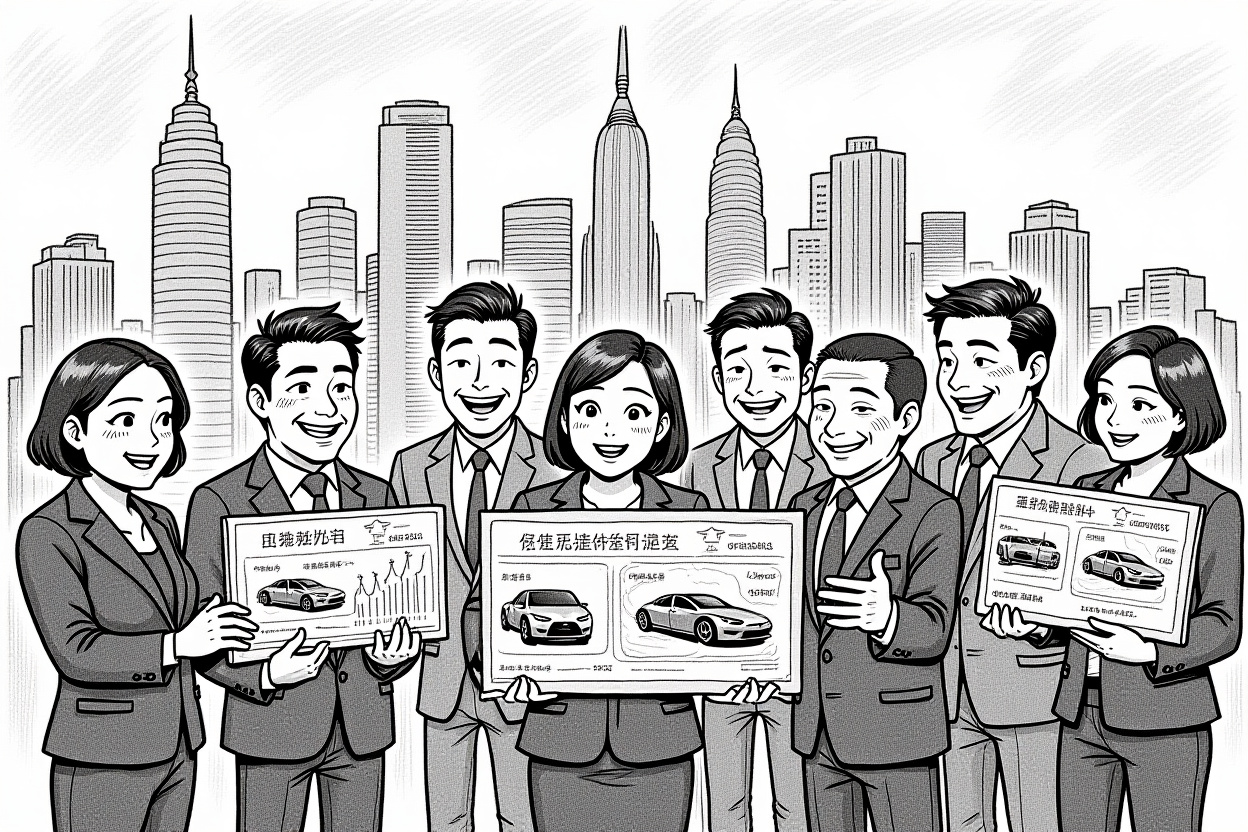Tesla Signals Production Boost Amid Improving Sales Data
Tesla’s German factory has announced increased production targets for the second half of 2025, signaling what may be the early stages of a sales recovery after months of declining performance across key European markets. André Thierig, head of Tesla’s German operations, publicly confirmed the production increase, citing “exceptionally strong sales data” as the driving factor behind the revised manufacturing plans.
European Production Adjustments Reflect Market Shifts
The Tesla Grünheide facility has officially raised its third and fourth quarter production targets, responding to what management describes as improving demand signals across its supply markets. This development comes as particularly significant given Tesla’s challenging performance throughout 2025, where the electric vehicle pioneer has seen market share erosion across multiple European territories.
Analyzing Tesla’s Global Sales Performance Trends
Recent data suggests Tesla’s sales may be bottoming out and rebounding after a difficult period marked by intensified competition and shifting consumer preferences. The company’s performance across different regions shows a mixed but gradually improving picture that warrants close attention from investors and industry observers.
Chinese Market Shows Early Recovery Signs
In China, Tesla’s second-largest market, indicators suggest potential improvement despite earlier setbacks. The company’s website now shows Model Y Long Range delivery estimates extending to November 2025, indicating current production slots through October have been fully allocated to customer orders.
– First-half 2025 China sales: 263,400 vehicles (down 5.4% year-over-year)
– August 2025 wholesale figures: 83,192 vehicles (down 4% YoY but up 22.6% month-over-month)
– September price reduction: Model 3 Long Range Rear-Wheel Drive cut by ¥10,000 to ¥259,500
These developments occur against the backdrop of China’s overall new energy vehicle market expanding 40.3% during the first half of 2025, reaching 6.937 million units and representing 44.3% of total new vehicle sales.
European Markets Present Mixed Recovery Signals
Tesla’s European performance shows both concerning declines and emerging bright spots, suggesting the sales bottoming out and rebounding pattern may be taking shape across different markets:
– Germany: August registrations down 39% YoY; year-to-date registrations down 56%
– France: August registrations down 47.3% YoY
– Sweden: August registrations down over 84% YoY
– Denmark: August sales down 42% YoY
– Netherlands: August sales down 50% YoY
– Norway: August registrations up 21.3% YoY
– Spain: August sales increased 161% YoY to 1,435 units
Despite improvements in some markets, Tesla’s growth rates in recovering territories still trail behind Chinese competitors like BYD, highlighting the intense competitive landscape.
Strategic Challenges and Musk’s Renewed Focus
Tesla faces multiple headwinds in the European market, including product portfolio limitations, intensified competition, and previously controversial political positioning from CEO Elon Musk. These factors have contributed to the company’s challenging performance throughout much of 2025.
Product Portfolio and Competitive Pressures
Analysts from Guoyuan Securities identify several structural challenges facing Tesla in European markets. The company’s relatively limited model range, with no new mass-market vehicles since the 2020 Model Y introduction, has created competitive disadvantages against both emerging Chinese manufacturers and traditional automakers launching numerous new electric models.
Leadership Stability and Strategic Direction
Future Growth Drivers: Robotics and AI IntegrationTesla’s strategic pivot toward artificial intelligence and robotics represents a fundamental shift in the company’s long-term vision, with implications for both valuation and future revenue streams.
Optimus Humanoid Robot Development Timeline
During the recent All-In Summit, Musk provided updated details about Tesla’s Optimus humanoid robot program, describing the V3 iteration as “the greatest product in human history” and outlining ambitious production targets:
– Optimus V3 design finalization imminent
– Production scheduled for 2026
– Five-year production target: 1 million units
– Projected cost at scale: $20,000-$25,000 per unit
– AI chip cost estimate: $5,000-$6,000 per unit
Strategic Implications of Robotics Focus
According to Tesla’s “Master Plan Part 4” unveiled September 2, approximately 80% of the company’s future value will derive from Optimus robot technology rather than traditional automotive operations. This represents a significant strategic reorientation toward AI integration and automation technologies.
Kaiyuan Securities research indicates that with Optimus V3 design finalization approaching in October, subsequent order announcements could provide ongoing catalysts for the sector. Following design completion, Tesla is expected to conduct large-scale manufacturing tests targeting 30,000-50,000 units while potentially developing the V4 model for future mass production.
Investment Implications and Market Outlook
The convergence of improving sales trends, leadership stability, and ambitious technology development creates a complex investment thesis for Tesla stakeholders. While recent data suggests potential bottoming out and rebounding of sales, the company faces significant execution challenges across multiple fronts.
Short-term Catalysts and Risk Factors
Investors should monitor several near-term developments that could influence Tesla’s performance:
– Quarterly delivery figures for Q3 and Q4 2025
– European market share trends following production increases
– Chinese consumer response to recent price adjustments
– Optimus robot development milestones and partner announcements
Long-term Strategic Considerations
Tesla’s ambitious valuation targets and technology transformation require successful execution across multiple complex initiatives simultaneously. The company must navigate intense automotive competition while simultaneously developing entirely new technology platforms and manufacturing capabilities.
Navigating Tesla’s Transition Phase
Current evidence suggests Tesla’s sales may indeed be bottoming out and rebounding after a challenging period, particularly in European markets where the production increase signals management confidence in near-term demand recovery. However, the company’s broader transformation toward AI and robotics represents both extraordinary opportunity and significant execution risk.
For investors and industry observers, the critical factors to monitor include the sustainability of sales improvements, progress toward Optimus development milestones, and successful navigation of intensifying competitive pressures across global markets. The return of Musk’s full attention to Tesla operations, coupled with ambitious incentive structures, could accelerate innovation but also introduces additional volatility into the investment thesis.
As Tesla navigates this complex transition, market participants should maintain balanced perspective on both the company’s impressive technological ambitions and the practical challenges of transforming these visions into sustainable business results. The coming quarters will provide crucial data points regarding whether current improvements represent temporary fluctuations or the beginning of a more substantial recovery trajectory.




